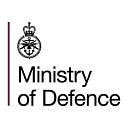Operation CABRIT: Deterring Russia in Estonia
British troops are leading a multinational battlegroup as part of NATO’s Enhanced Forward Presence, here's why:
In 2017 around 4,000 troops were deployed to Latvia, Lithuania, Poland and Estonia. The deployment along Europe’s eastern flank makes up NATO’s Enhanced Forward Presence (EFP).
The UK has been playing a key role in this operation since the beginning.
Here is all you need to know about the Operation 👇
What is Operation CABRIT?
Op CABRIT is the codename for the British Army’s deployment to Eastern Europe as part of NATO’s Enhanced Forward Presence.
There are roughly 800 soldiers from the British Army deployed to Estonia where they lead one of the four Multi-national battlegroups. These soldiers make up the bulk of the battlegroup in Estonia, with allies from Denmark and France supporting.
Op CABRIT also accounts for around 150 Britsh soldiers deployed to Poland, where they are part of the US-led battlegroup.
- In Pictures: Operation Cabrit
- My 7 months in Estonia on a NATO mission
- In Pictures: Dragoons in Poland
What is NATO’s Enhanced Forward Presence (EFP)?
In 2017, NATO enhanced its presence in the eastern part of the Alliance, with four multinational battlegroups in Estonia, Latvia, Lithuania and Poland.
These battlegroups, led by the UK, Canada, Germany and the United States, are multinational, and combat-ready, demonstrating the strength of the transatlantic bond.
It is part of the biggest reinforcement of Alliance collective defence in a generation.
Why is this necessary?
The Baltic States have had a complicated history with their Russian neighbours for over 100 years and ever since the Russian-Georgian conflict in 2008, the Baltics have grown ever more anxious. In 2014, relations between the West and Russia worsened further following the invasion and annexation of Crimea.
“Enhanced Forward Presence is a demonstration that NATO understands the risks of our region and is reacting proportionately and protecting us all”
— Kersti Kaljulaid, President of Estonia
How serious is the threat?
There is no imminent threat against any NATO allies but we have seen a more assertive Russia in recent years. Russia has significantly increased its military presence in the region and has already shown willing to use military force against Ukraine and Georgia. Russian aircraft are frequently intercepted by NATO Air Policing missions in the region as they enter NATO’s air space.
“Together, we are NATO. Allies working as one. As part of the largest reinforcement of our collective defence since the end of the Cold War.
Your presence here demonstrates NATO’s unity and solidarity. Unity in the shared values and common purpose of NATO and solidarity which reaches across the Atlantic.
Your service reflects the vitality of our transatlantic bond.”
— NATO Secretary General Jens Stoltenberg
The Battlegroups
Each of the four multi-national battlegroups are combat-ready, and they train and operate alongside host nation forces.
The NATO forces train on a weekly basis, this may be small training drills through to large scale battlegroup level exercises. For example, Exercise Spring Storm.
Exercise Spring Storm is an annual training drill, which sees Estonian conscripts mobilising as a simulated threat which the EFP troops respond to. The UK-led Battle Group act as the defending force, sending its armour and troops to a training ground in central Estonia.
Spring Storm aims to test the readiness of NATO forces in responding to a fictional threat. This is just an example of the many ways that the UK and allied troops deter foreign aggression.
A Russian speaking population
The Baltics long history with Russia is complicated, made even more so by the Ethnic Russians living in these countries.
Right after the Baltics became free nations in 1991 the question of Citizenship was born. After being made to take language and history lessons to become citizens, they felt second class.
Since then, Putin has publicly stated that it is Russias intention to protect them, this was the pretext to the invasion of Crimea (Crimea was an autonomous republic within Ukraine that had a majority ethnic Russian population.
An attack on one is an attack on all
Otherwise known as Article 5 of the Washington Treaty (NATO’s founding document) it means that “an attack or provocation on one of its member states is considered as an attack against all.”
This is known as collective defence and has come into play once — in response to the 9/11 terrorist attacks in 2001.
NATO’s EFP is a stark reminder that collective defence is indivisible and gives credence to the fact that an attack against one is an attack against all. This reassures our allies.
